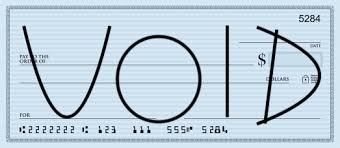Financial assets bring more money, whereas financial liabilities take out money from our pockets. In this article we will discuss the characteristics of financial assets, different types of financial assets and real assets, definition of non financial assets and financial liabilities.
We have also provided free pdfs that will aid your understanding of the subject.
Without further ado, let’s proceed.
Financial assets and liabilities
What is a financial asset?
A financial asset is any asset that is:
1. Cash
2. A contractual right to receive cash or another financial asset from another entity
3. A contractual right to exchange financial assets/ liabilities with another entity under conditions that are potentially favourable.
4. An equity instrument of another entity.
According to Investopedia, a financial asset is a liquid asset that gets its value from a contractual right or ownership claim.
Contractual rights are those rights that are guaranteed under a contract and which are legally enforceable.
Examples of financial assets include: cash, stocks, bonds, mutual funds, and bank deposits.
Note: Financial assets do not necessarily have inherent physical worth or physical form, unlike land, property and commodities.
Rather, their values reflect factors of supply and demand in the marketplace in which they trade, as well as the degree they carry.
Financial liabilities on the other hand:
A financial liability is any liability that is a contractual obligation:
1. To deliver cash or another financial asset to another entity or
2. To exchange financial instruments with another entity under conditions that are potentially unfavourable or
3. That will or may be settled in the entity’s own equity instruments.
A liability is something a person or company owes, usually a sum of money.
Liabilities include loans, revenues, bonds, warranties, and accrued expenses.
In the world of accounting, a liability is defined by previous business transactions, events, sales, exchange assets or services, or anything that would provide economic benefit later.
See also: Accounting and finance: Difference, jobs, courses, careers (+ top university picks)
What are the three different forms of financial assets?
Financial assets consist of bank loans, direct investments, official private ownership of debt and equity securities, and other financial instruments.
What types of financial assets exist?
Bank deposits, cash, stocks, bonds, and mutual funds are all examples of financial assets.
What are other names for financial assets?
Intangible assets include financial assets, often known as financial instruments or securities. They are frequently used to finance the ownership of real estate and equipment.
Characteristics of financial assets
There are peculiar characteristics in financial assets that are used to determine their pricing in the financial markets.
Let’s take a look at some of them:
1.Ability to generate income
It implies that they should be easily convertible to cash within a defined time and determined value.
Examples of financial assets traded for cash easily include: treasury bills, trade bills, commercial papers, etc.
2. Reversibility
They act like deposits in accounts of customers with the bank.
This means that the cost of investing in the financial assets and getting them back to cash is negligible.
3. Maturity period
Maturity period refers to the length of time within which the corporate entity or institution that employs a financial instrument to raise funds will use the funds before its payment back to the holders of the instrument.
4. Predictable returns
The return on investment on financial assets must be predictable for the purpose of their being patronized by investors.
5. Convertibility
This implies that a financial asset can be converted into another class of asset which will still be held by the corporate entity.
For example, the conversion can take place in form of a bond converted to bond.
Or, preference shares converted to equity shares.
Or, a company bond converted into equity shares of the company.
See also: Sources of finance: A foolproof list for small businesses and entrepreneurs
Types of financial assets and real assets
A financial asset is a liquid asset that gets its value from a contractual right or ownership claim.
Financial assets include things like:
1.Stocks
2. Bonds
3. Cash
A financial asset has some type of monetary value that can be readily realized.
Real assets are value generating physical assets that a business and/or investor owns. They include things like:
1.Land
2. Buildings
3. Ships and other infrastructure or commodities.
A real asset has intrinsic value in and of itself not relies on monetization or exchange in order to provide value for its owner.
Classification of financial assets
Financial assets can be classified into:
1.Financial assets at fair value through profit or loss
2. Held to maturity investments
3. Loan and receivables
4. Available for sale financial assets
In summary, the classification depends on the purpose for which assets are bought and held.
1.Financial assets at fair value through profit or loss
This includes assets that do not have a price quoted on an active market, but for which the fair value can be determined.
2. Held to maturity investments
These are non-derivatives assets with fixed payments which they intend to hold to maturity e.g: subscribed bonds.
3. Loans and receivables
These are non derivative financial assets with fixed payments that are not quoted on an active market and in which the group does not intend to trade.
4. Available for sale
It is represented by non-derivative financial assets that are designated as available for sale and which have not been assigned to one of the previous categories.
They are classified as non-current assets
Source: Sogefi Group
Financial assets examples
Examples of financial assets include: cash, stocks, bonds, mutual funds, and bank deposits.
Financial assets do not necessarily have inherent physical worth or even physical form, unlike land, property, commodities and other tangible physical assets.
Let’s take a look at non financial assets
Non financial assets
A non financial asset refers to an asset that is not traded on the financial markets.
It’s value is usually gotten from physical characteristics rather than from contractual claims.
Some examples include: tangible assets such as land, buildings, motor vehicles, and equipment, intangible assets such as patents, goodwill, and intellectual property.
Non financial assets are usually very important for companies.
They can also be used as collateral when securing credit from financial institutions.
Unlike the financial assets, there is no active market for buyers and sellers of non-financial assets.
Also, there are no market standards for determining the pricing of non-financial assets, such as equipment or motor vehicles, and the value of an asset is determined based on its physical characteristics.
Financial assets pdf
Get the best pdfs on Financial Assets and Liabilities by clicking here now.
How do you categorize monetary assets?
On a company’s balance sheet, financial assets can be categorized as either current or noncurrent assets.
What is the most widespread form of financial asset?
The most prevalent types of financial assets are retirement accounts and demand deposits. A financial asset is simply the ownership or contractual rights to an underlying asset, such as a company, real estate, or commodity.
What function does a financial asset serve?
Financial assets facilitate the movement of money. They transfer funds from those with excess funds to those in need, be they individuals, businesses, or even the government. Financial assets are a claim or promise to future cash flow.
Final words
Financial assets and liabilities have been explained in great detail in this blog post.
Drop your questions if you have any.
And if you done, hit the share button!






